Like millions of other travelers, we were excited to check Machu Picchu off of our bucket list. We did our research and knew they only let a certain number of travelers in per day, that we couldn’t bring tripods, that drones were banned, and that we had to keep our backpacks small [as of June 2017 when we visited]. As of July 1, 2017, even more stringent rules have been applied such as no touching walls, no exiting the park once you have entered and more in an effort to preserve the citadel. What we didn’t anticipate was a direct but unwritten ban on creative photography.

We had been in partnership with the national tourism board of Peru for over a month before we arrived at Machu Picchu. We had also done our research. We proceeded as we always do. We packed up our dress in a backpack that was of approved size, left our tripod behind, and were excited to put our spin on photographing this wonder of the world.
When we arrived, we wandered around for about an hour before we settled on a spot. Pathways were clearly marked and we knew we would have to photoshop out some rope that was keeping folks off the grass, but that was okay. Victoria put on our signature white dress over her clothes [so as not to strip down in this sacred site], we got settled, and snapped a few photos. INSTANTLY guards descended upon us. We thought we had gotten too close to the barrier, so we stepped back and snapped a few more photos before trying to move to another spot.
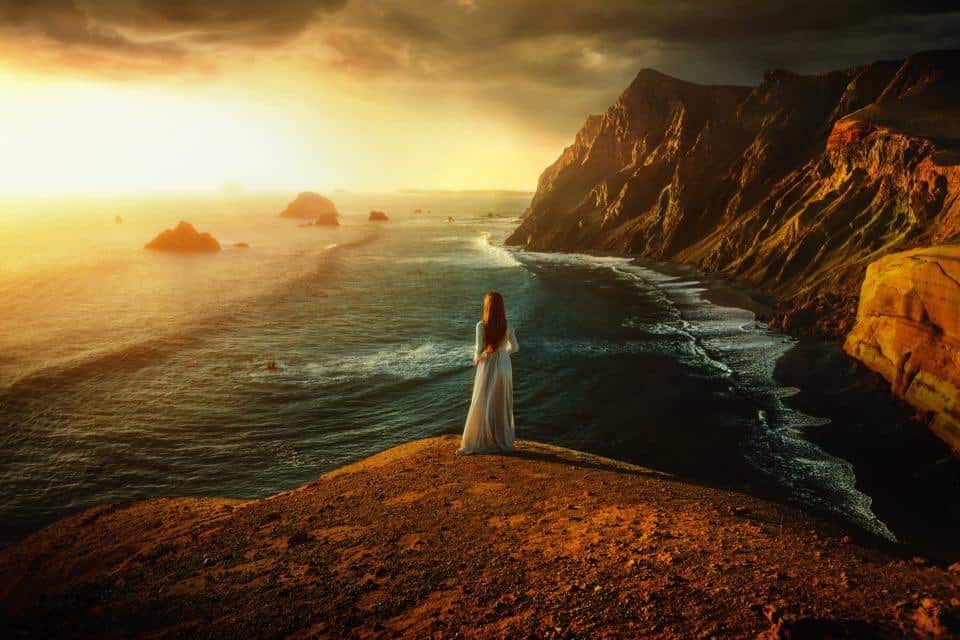
We didn’t walk more than five steps before we were surrounded by guards talking quickly in Spanish. We understand words but are not fluent so we were confused as to what we had done wrong. They pointed to the white dress and made a motion that appeared to be “take it off.” Before we had time to react, three middle-aged male guards walked over and literally lifted up Victoria’s dress to see if she had anything on underneath. Let us repeat this…they lifted up her skirt and looked under it. Grown men looked up the skirt of a young woman who had no idea what she was doing was breaking a rule that is virtually nonexistent online [as of writing in June 2017] and posted nowhere at Machu Picchu.
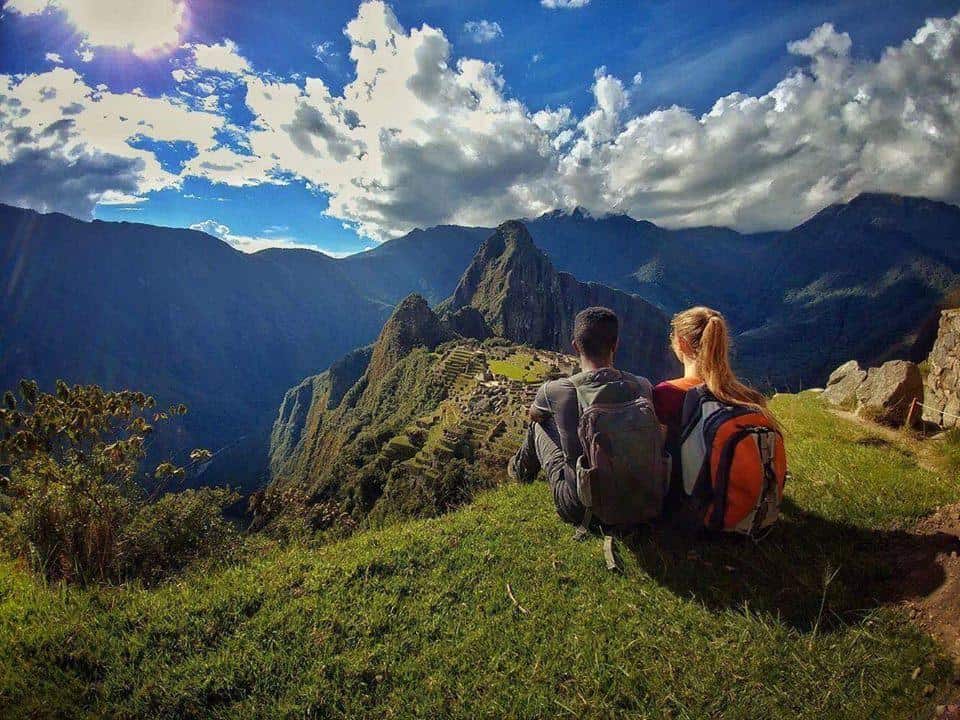
These days, for modesty and warmth, Victoria wears her pants and shoes underneath the white dress so the men saw the pants and proceeded to make Victoria change in the middle of the park. So many times in the past, we had not used pants or a top under the white dress. What if no pants were being worn at the time? What if this had happened to another unsuspecting woman who was much more sensitive about modesty than Victoria?
Once Victoria had changed, guards came up to Terrence and asked to see his camera. They proceeded to take the camera from us and began to delete all the [few] photos we took in front of them. We were confused and asked why. They mumbled something about permits and asking and no long dresses. Hold up a second….no long dresses?
We were very shaken and really didn’t enjoy the rest of our day at Machu Picchu. Luckily, we were heading back the next day and aimed to ask the local branch of the tourism board if it was okay to shoot in a long sleeve red maxi dress we had brought.
The next morning, Victoria donned the maxi dress and we headed to ask permission. The tourism board representative brought us to the local park authorities inside and the old man literally did not seem to care. We waited and the tourism board lady brought us to meet with the manager of all of the guards that patrol Machu Picchu. He spoke great English so we were able to converse easily.
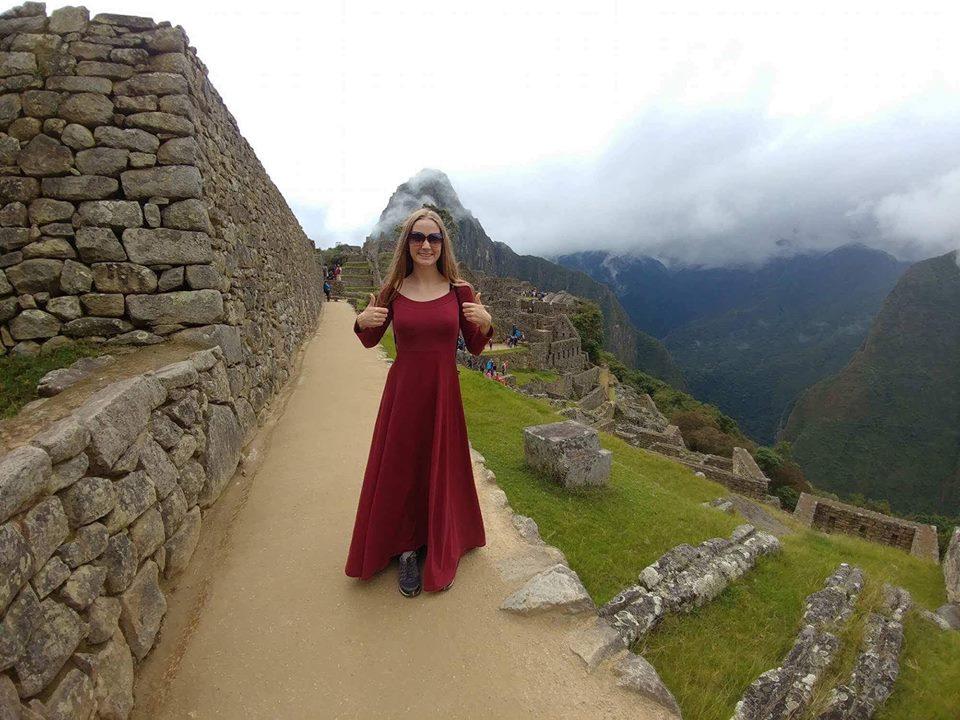
He asked what we wanted and we told him about our experiences of the previous day and said that instead of a white dress which we understood could have been construed as a “wedding dress,” we wanted to get permission before we made our way all the way back up the mountain to wear and photograph this red maxi dress. We showed him that the dress was very plain, made out of jersey fabric like a tshirt, with no embellishments whatsoever. He eventually granted our request to wear the red dress, but not before we asked him the reason for all this craziness.
He said that creative/artistic photography is banned from Machu Picchu. He said if he let us wear a “fancy dress” more people will want to wear fancy dresses and that will “bring the riff raff.” When asked further about this alleged creative photography ban, he didn’t have much else to say other than it would bring the wrong kind of people and you could get a permit but that takes 15 days, costs a lot of money, and only maybe would you be approved. We didn’t want to press the issue more since he had been nice enough to approve our dress, so we left.
The manager said he would radio all the guards and let them know not to bother us. We aren’t sure if this happened, but it didn’t feel like it. Since the red dress is a Maxi dress and not a formal dress, Victoria decided to spend the day in it. It was free flowing and made walking around comfortable and easy. We often feature maxi dresses in our work for @followmeawaytravel and have seen countless photos of girls on Instagram at Machu Picchu wearing maxi dresses or modest dress so this wasn’t much different.
Except it was different. People of all nationalities [not guards] were extremely rude and talking about Victoria behind our back but just loud enough that we could hear “what is she doing” or “vestido! vestido, vestido!” [spanish for dress] as we walked by. Every single guard we walked past looked at us as if we were stealing something, even though Victoria was literally walking in a jacket, a red maxi dress, hiking shoes, and carrying a backpack.
Even though the manager alleged he would tell the guards, we weren’t really sure if he did or not, so we were scared to take more pictures so we wouldn’t be confronted again. We ended up taking some but left it at that because we didn’t feel comfortable and didn’t want to get in trouble again. Our trip in Peru had been wonderful, but this experience had left a bad taste in our mouth and tainted a wonder of the world for us.
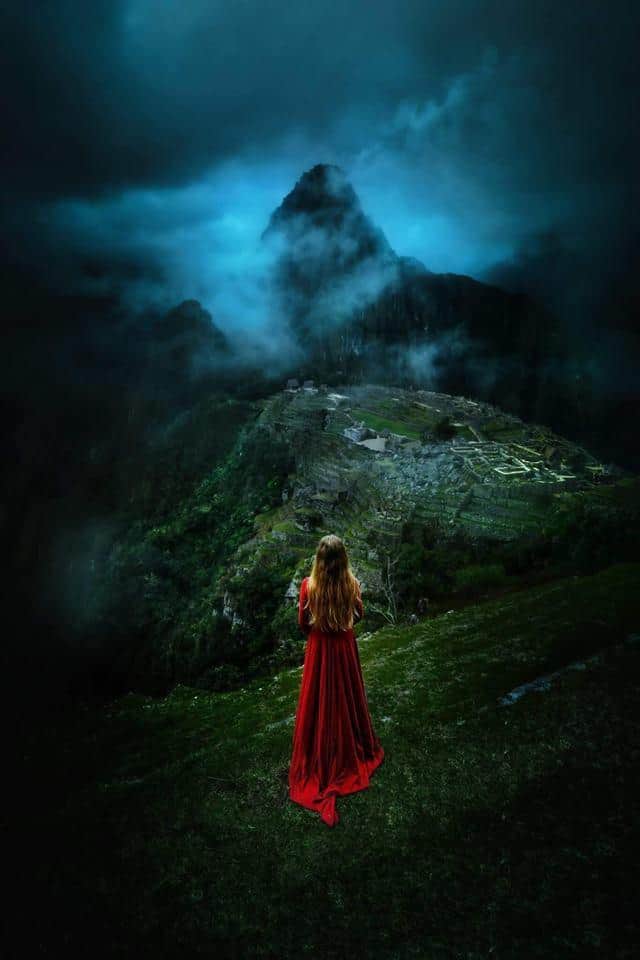
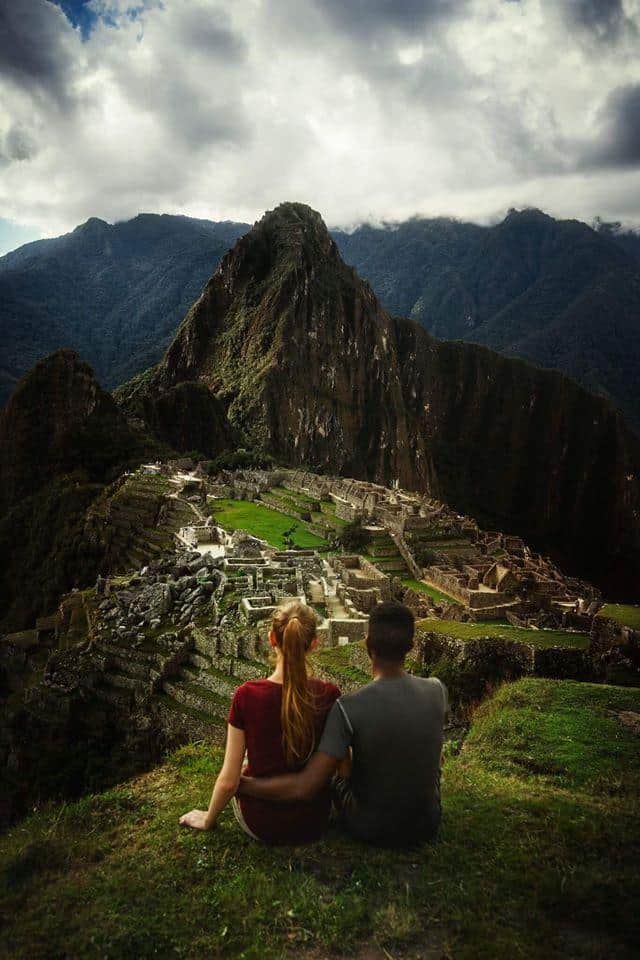
Upon arriving home, we did deep research online, searching everything we could imagine to try and find out how we could have been better prepared. There was nothing except one website in the entire world wide web that mentioned something briefly about “no dress up” [whatever that even means [as of June 2017 when we visited]. Any searches pointed towards no tripods or no drones or no rigs for acrobats, no fashion shows, no crazy costumes, and no hiking poles, totally reasonable bans!
We emailed our contact at the Peru Tourism Board and asked about this creative photography ban and the permit we were told to get. She told us that the permits cost 800 sols per day [over $300] and must be secured 3 weeks in advance. She said these permits were for big productions and producers looking to film at the locations. She said travel bloggers never have problems, as long as tripods aren’t used and only a regular camera, not a film rig, is used.
Our experience is problematic in so many ways mainly:
Many women wear long skirts for cultural, religious, or modesty reasons, and making these women feel singled out is wrong and needs to be fixed.
Luckily, Victoria is an American Catholic and our culture does not dictate the wearing of long skirts or, heaven forbid a head covering. During our time in these uncomfortable situations and with men looking up our skirts or fellow travelers and guards speaking loudly about someone in a maxi dress, we could only think of what may have happened if a woman in the Muslim faith who wore long skirts, a Amish woman, or simply a girl who preferred the simple modesty long skirts provide over pants or shorts.
“If people start wanting to wear nice dresses, it will bring the riff raff”
Um, what? Won’t it do the opposite? We have traveled to 24 countries and to countless UNESCO world heritage sites, protected monuments, and fragile landscapes. We promise that everyone we saw in a fancy dress getting their photos taken in Iceland was much more respectful and on the path than folks who were dressed in normal clothes. From Oregon to Paris to Prague, everyone we have ever seen in a nice outfit was shivering and focused on their husband-to-be and totally respectful of the rules. This isn’t to say that there aren’t some people who won’t obey and will try to push the law as far as possible without getting caught, but why limit that to just people who wear nice dresses? In our experience, the people who push the rules are usually dudes in cargo shorts on Instagram. We 1000% want to respect the rules everywhere we go but the rules must be clearly stated and should be enforced evenly.
A “creative photography ban” is ambiguous at best
The term “creative photography ban” is open to a ton of interpretation…..at the discretion of Machu Picchu security. There are no rules posted or websites online to delineate exactly what is and is not allowed by creatives visiting Machu Picchu. To us, creative photography may be a shot of someone standing with something levitating around them. If someone wanted to create a conceptual piece such as this at Machu Picchu, but the person was in normal clothes, guards would not know and simple objects being photographed would not stand out. The final piece, though, would be very creative in nature and would apply artistic vision and a ton of post-production editing.
This is what we, as folks in the industry, may consider to be creative photography. This is what Machu Picchu guards, who are not in the industry may never know is even taking place. Creative photography may also be considered to be a plain landscape shot that is taken of Machu Picchu, blended into fantastical works of photoshop art as is popular on Instagram these days. This photographer would simply look like they are taking a regular landscape photo, yet the outcome would be very creative. Is this banned as well?
The fact of the matter remains that a photographer could take the most uncreative photo in the world of a girl in a dress, but would this be more of a call to action than fantastic scenes or levitation?
What about the millions of people in normal clothes?
Do people in normal clothes get a pass because they don’t draw the eye? We saw a ton of people step over the barriers for photos, sit on an ancient window sill for selfies, or dangle their legs off the cliff, all things that are banned and for a good reason. Tons of guards were literally looking right at these people and said and did nothing. On our last day at Machu Picchu, we even saw a dude get in with his tripod and many people with walking poles, things that are strictly banned with signs to explain. Why do the unspoken rules apply to some of us, but the posted and talked about rules are followed loosely at best?
You can be a girl in booty shorts [no shame in that!] doing a duck face on the other side of the fence, you can be an amateur photographer taking overexposed photos [you do you], but you cannot be a girl in a plain long dress, standing on the path, simply looking at a UNESCO heritage site and getting her photo taken.
Let us be clear that we don’t do anything special for our photos. Literally standing and looking out…you have seen it many times before on our Instagram. Nothing we do is special and nothing we do draws attention to ourselves. If we were standing in ugly hiking pants and a t-shirt, no one would bat an eye, but put on a simple red maxi dress and suddenly we are everyone’s problem.
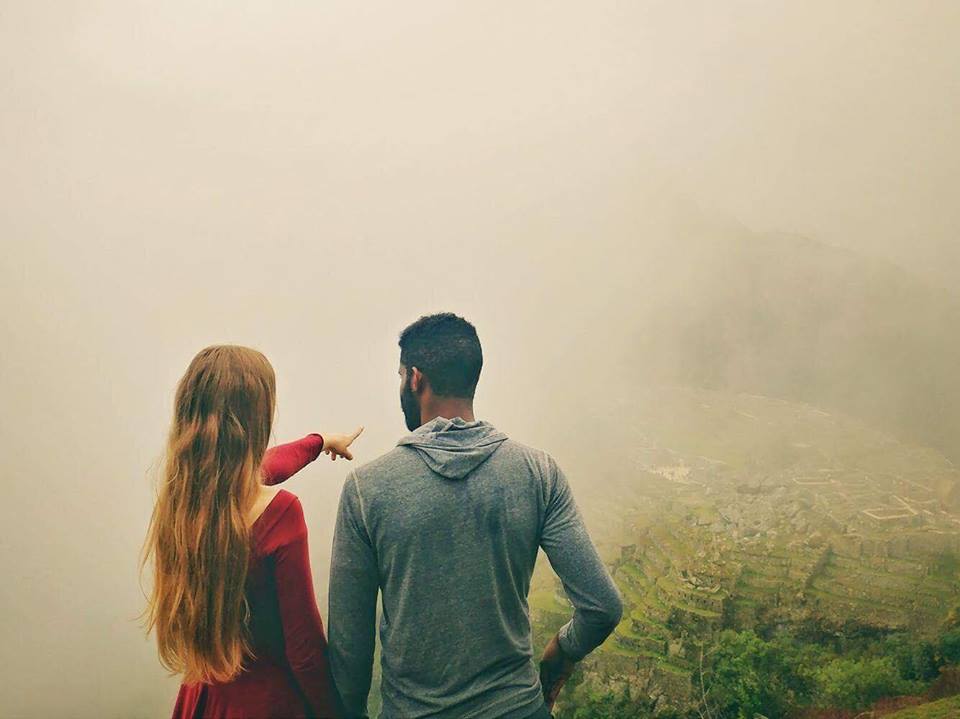
There are better ways to go about these things
Plain and simple, there are better ways for the Machu Picchu authority to go about these rules.
- Instead of using ambiguous terms and banning “creative photography,” be specific with what is being banned. For example, if the authority is worried about flash, lighting rigs, makeup chairs, a huge wardrobe, etc. being brought in, then say that! The ban on tripods and drones is made quite clear to everyone. It isn’t too hard to add “flash stands” or whatever the authorities were worried about regarding creative photography, to that list. Other than that, everyone is relegated to carrying things in a small bag. If a girl wants to wear a dress, why does it really matter?
- Post these rules prominently online with an explanation, and “it will bring the riff raff” doesn’t cut it. We have shot everywhere from the UNESCO world heritage site of old town Prague, to fragile landscapes and old ruins, how the heck were we supposed to know that wearing a dress somehow wasn’t allowed at Machu Picchu since it isn’t posted online or on our tickets? One single website we found after over an hour of searching stated “no dress up” which again, is ambiguous and confusing [as of June 2017] and now after the new rules have been enforced we have found “no fashion shows” and “no crazy costumes” which make sense.This was a random tour company website, in the sea of hundreds of other tour companies and thousands of websites. When searching what not to do at Machu Picchu or photography bans, nothing of this kind comes up. Clearly, Machu Picchu authorities don’t care about photographers taking and selling photos for money as millions of folks photograph the citadel per year. One day, we would love a reason on why someone isn’t permitted to follow all the rules while simply being in a long dress.
- Under no circumstances, should guards ever look up the skirt of a visitor. This is problematic behavior in the least and harassment at most and should not be tolerated. We were already confused by why we were being taken aside or if we had done something wrong, so we were not able to stop the guards when they picked up the skirt and began peering underneath. We were in too much shock and couldn’t understand what was going on. We hope that this never happens to another woman in the future, although we are not so certain based on our experiences.
Machu Picchu itself was a stunning place, but the rules surrounding behavior inside the site are senseless and outdated. The experience could be improved for all by simply defining the rules more clearly, creating rules that can be understood and found easily online, and by better training of the guards to actually stop people from harming the site instead of looking up women’s skirts. It is also essential for the authorities to stop targeting creatives specifically as folks who will automatically do something against the rules and actually wait for them to do something wrong before confronting them or creating baseless guidelines left open for interpretation.
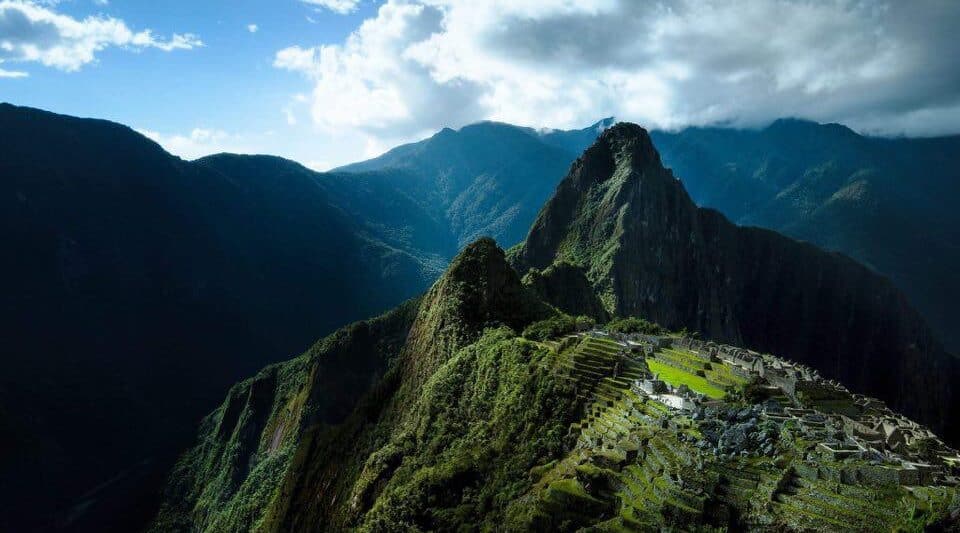
 Our 2017 Year In Review: The Good, The Bad, And The Crazy
Our 2017 Year In Review: The Good, The Bad, And The Crazy